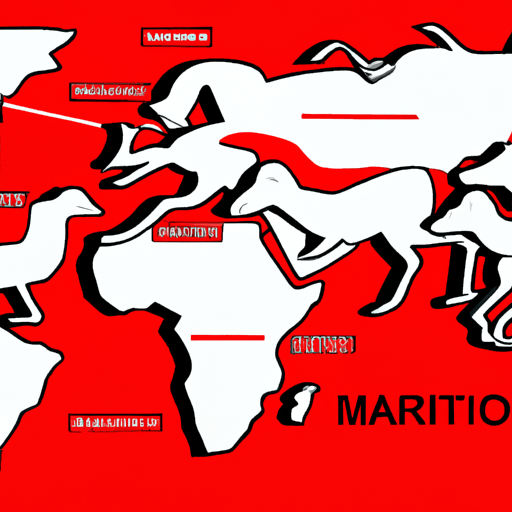The Impact of Human Activity on Animal Migration Patterns
As human activity continues to expand and inhabit more areas of the world, the disruption of animal migration patterns has become a major ecological issue. Human activities, such as deforestation, air and water pollution, and agricultural practices, are disrupting the migratory patterns of animals around the world. Conservation efforts are being implemented to help reduce the negative impacts on animal migratory patterns, but the long-term implications of the disruption of animal migration patterns can be devastating for the planet's overall health and biodiversity.
Deforestation and Animal Migration Patterns
Deforestation has become one of the most significant issues when it comes to disrupting animal migration patterns. Trees provide a habitat for a variety of species, and their loss causes animals to lose their homes, food sources, and other necessities. As a result, animals may be forced to migrate to areas where they are unfamiliar with the conditions and unable to find the resources they need. In addition, deforestation can lead to the destruction of animal migration corridors, which are crucial for the species to be able to move freely between different habitats.
Air and Water Pollution and Animal Migration Patterns
Air and water pollution also has an effect on animal migration patterns. Pollutants such as chemicals, industrial waste, and pesticides can contaminate water sources, making them unsafe for animals to drink. Additionally, air pollution can have an effect on the air quality in certain areas, making it difficult for animals to breathe. As a result, animals may be forced to migrate to areas with cleaner air and water, or they may be unable to find the resources they need and be forced to stay in their current habitat.
Agricultural Practices and Animal Migration Patterns
Agricultural practices can also have an effect on animal migration patterns. Intensive farming methods can lead to the destruction of habitats and the loss of food sources, forcing animals to migrate to other areas in search of resources. Additionally, agricultural practices can lead to water pollution, as fertilizers and pesticides can contaminate water sources and make them unsafe for animals to drink.
Potential Solutions for Reducing the Impact of Human Activity on Animal Migration Patterns
There are a variety of potential solutions that could help reduce the impact of human activities on animal migration patterns. Regulations could be implemented to limit deforestation and agricultural practices, while air and water pollution could be reduced through the use of cleaner energy sources. Additionally, conservation efforts such as habitat protection and restoration could help preserve animal migration corridors and provide habitats for animals to live in.
The Long-Term Implications of Disrupting Animal Migration Patterns
The long-term implications of disrupting animal migration patterns can be devastating for the planet's overall health and biodiversity. Without the ability to migrate, animals may be unable to find the resources they need to survive, leading to decreased populations and a loss of biodiversity. Additionally, the disruption of animal migration patterns can lead to the disruption of the entire ecosystem, as the loss of certain species can affect the delicate balance of the environment.
The disruption of animal migration patterns due to human activities is a major ecological issue that needs to be addressed. Conservation efforts are being implemented to help reduce the negative impacts of human activities on animal migration patterns, but more needs to be done to ensure that the planet's biodiversity and health are preserved. By working together, we can help protect the natural environment and ensure that animal migration patterns are not disrupted.



















Comments
Leave a Comment